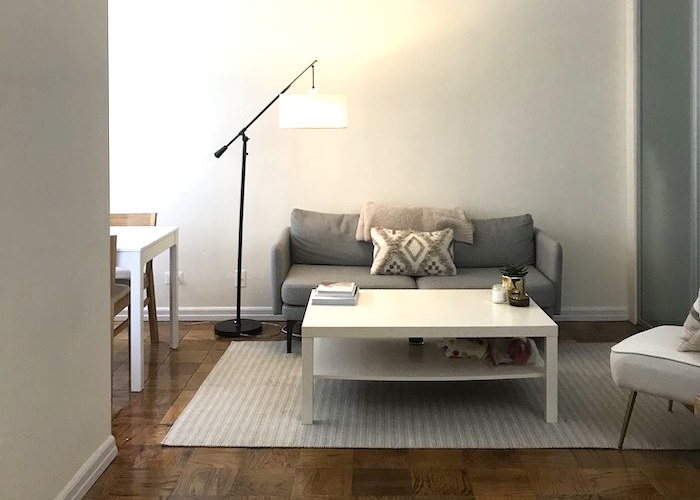5 Nearly-Free Tools I Use To Manage My Mental Health At Home

DISCLAIMER: The following list is not a substitute for therapy and actual medical advice. Rather, they are means of bolstering overall wellness and supplementing the tools given by professionals. If you are struggling with depression and anxiety, please seek help.
According to the Anxiety and Depression Association of America, roughly 18% of adults in the United States suffer from an anxiety disorder, which is often accompanied by depression. Of those suffering from anxiety/depression disorders, only about 37% are receiving treatment. Young professionals, in particular, are at risk; it is reported that 20% of the millennial generation admit to suffering from depression, and the American workforce is facing a bold new frontier, a changing of the guard, in how it approaches mental illness in its workers.
“Self-care” is a phrase that comes up a lot in typical lifestyle media. Recent college graduates and fresh-faced young professionals care a great deal more about work-life balance than prior generations (must be all the entitled millennial Kool-Aid). But more than that, “self-care” is a means of maintaining overall wellness. When depression or anxiety is a part of your health landscape, that maintenance can feel a tad overwhelming. Therapy is expensive. Prescription medication faces social stigma in addition to a hefty price tag.
In my own experience of dealing with depression, I discovered that therapy could keep my head above water but that, if I was gonna swim, I needed to create my own set of figurative floaties. I am the average twenty-something, lacking in resources and working “for experience” (the first rule of self-care, don’t do shit for free…). But what I do have is an internet connection. Here is my list of cost-effective mental health management tools:
1. Mental Health Podcasts
How fashionable of me, right? There’s just something so cerebral about being someone who listens to podcasts. I have always found that discussing mental health is a great way of treating mental health. The more honest and open we are about our feelings and our triggers, the better we can personally understand and cope with those factors.
This is certainly true for me but I find myself in the position of living far away from family and spending the bulk of my day in Los Angeles traffic and then at the office. Not much time in there for a restorative vent session. I discovered The Hilarious World of Depression in a blog post about mental health, and I’ve become addicted. The show discusses depression through the scope of comedy (just goes to show that all comedy comes from tragedy). It’s wickedly funny but jarringly honest. I’ve started making that three-hours-a-day-in-traffic work for me by engaging with material that gets me to thinking about my depression in a way that is constructive.
2. Fitness Channels on Youtube
Say the cliché with me: “Healthy body. Healthy mind.” Well, it’s true. Physical activity and proper diet have long been associated with treating depression. To quote the great philosopher Elle Woods, “Exercise gives you endorphins. Endorphins make you happy. Happy people just don’t kill their husbands.” Iconic.
Aside from just being good for you, exercise does pump you full of joy-giving endorphins. It gives your mind somewhere to focus that nervous energy. It helps you sleep better at night (which is also SO IMPORTANT to maintaining a healthy psyche).
If you’re like me, the gym is a burden. It’s a time suck. Where I’m from, memberships and even individual classes are expensive, and the time spent in traffic getting there is hardly worth it. Enter The Internet…
Youtube hosts hundreds of channels for any skill level and any possible form of exercise. I start my day with yoga and an hour of muscle group training, and I don’t even have to leave my apartment. It’s a great resource for anyone with a gym hang-up that directly impacts your mental well-being.
3. Mood Tracker Apps
The tricky thing about mental illness, especially anxiety and depression, is that it can trick you into believing that you’re out of good days. Or that your life, up to this point, has been a parade of disappointment and failure. It was during such a low period that I downloaded a mood tracker app (Daylio being my personal preference). The concept of these apps is simple: every day you log in and note your overall feeling of the day (was it good, was it bad) and it keeps track of those patterns. My first entry was a big blue sad face and I ticked off the boxes of what I had done that day and added a note about feeling ashamed for ordering takeout. I logged in every day for a month without thinking of it and then, out of curiosity, I looked back at the app. Way more good days than bad days. Very clear patterns about what made a good day good and a bad day bad. The notes I was writing to myself in the moment spoke volumes. The app even showed that I was at my worst during a specific time frame.
These sorts of tools, when used regularly, can really put a specific struggle into perspective and help individuals better recognize their needs.
4. Meditation
When you’re a logic and facts type of gal, meditation can seem like hippie-dippy nonsense. However, take away the stereotype of singing bowls and chanting, and you’ve got a very useful tool. Our lives as young professionals are hectic and full. We’re going, going, going between our working lives and our social lives. Meditation is an opportunity to bring the mind to stillness, and it can come in many forms. I personally use Youtube channels for guided meditations, ambiance mixers to provide some calming white noise at work, and apps to help guide the breath. Meditation can be fifteen minutes out of your morning, five minutes at your desk, or much longer stretches of time.
It’s a truly customizable process that can help you manage everything from stress to getting better sleep to cultivating a sense of joy.
5. Lists and Journaling
There have been studies upon studies upon studies that tout the calming power of a simple to-do list. Depression can suck the motivation out of you. Anxiety can make you feel that you have lost all control. Lists are an excellent way of giving some tangibility to the abstract. It feels good to cross something off a list and there are psychological benefits as well. Lists are a way of making large concepts seem pared down and manageable. This can mean how you attack your day or a simple reflection on things you like about yourself.
Journaling is the long-form take on this and has many of the same practical advantages of meditation and mood tracking. While grappling with a period of depression, I was looking back on old journal entries and was able to suddenly see very clearly how my mood, outlook, and language changed when certain factors were introduced into my life (wouldn’t you know it, the source of my depression was right there!). Writing things down allows the mind to process them and gives us the ability to go back and understand them later.
Caitlin is a 1L year survivor and coffee shop haunt who splits her time between Los Angeles, CA and Austin, TX. When she’s not writing, Caitlin enjoys movies, yoga, and indulging her INTJ/Capricorn bend with research on her many academic passions.
Image via Pexels




